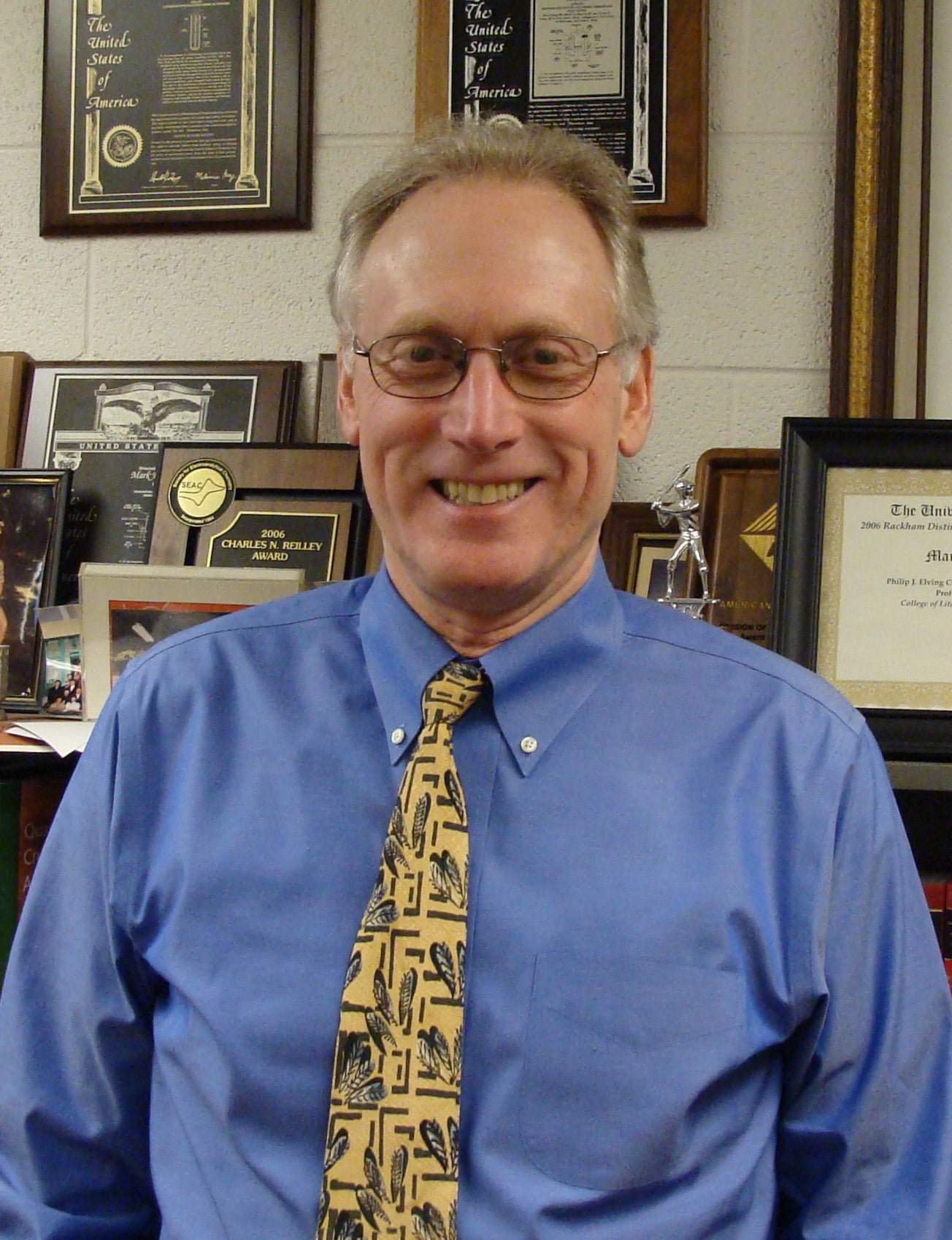Welcome to the Meyerhoff Lab Website!!
Thanks for taking the time to view the  contents of this site and learn about the exciting ongoing research activities in my research group.
contents of this site and learn about the exciting ongoing research activities in my research group.
In a nutshell, our research interests are in the areas of bioanalytical chemistry, electrochemical and optical sensors, and novel nitric oxide releasing/generating biomaterials/devices and well as NO related therapeutic agents. Our current efforts are primarily focused on the following projects:
In the field of chemical sensors we are investigating new ways to measure polyions, such as heparin, protamine, polyquaternary ammonium species, carrageenans, etc. We have developed novel polyion sensors for this purpose, both single-use and reversible sensing devices. These sensors are based on polymeric membranes into which the polyions can be selectively extracted via formation of cooperative ion-pairs with lipophilic ion-exchanger species doped within the membrane. This extraction process yields a voltage change at the surface of the membrane. We have previously used this technology to measure heparin in undiluted blood samples, and now investigating new applications of this technology, including use of the reversible pulsetrode type polyion sensors as detectors in chromatography, flow-injection analysis and microfluidic devices.
We are also developing methods to improve the biocompatibility of implantable electrochemical/optical gas/ion sensors and other blood contacting medical devices (stents, vascular grafts, extracorporeal circuits, etc.) via novel use of nitric oxide (NO) release polymers. In our latest work in this area, polymers such as polyurethane, poly(vinyl chloride), and polydimethylsiloxane are being doped/impregnated with S-nitroso-N-acetyl-penicillamine (SNAP) and we have found that these materials can release NO for extended time periods (e.g., up to 1 month). Further, the resulting polymers (and devices made from these polymers; e.g., catheters, in vivo sensors, etc.) exhibit a dramatic decrease in platelet adhesion and surface clot formation (compared to control devices) during both in vitro and in vivo experiments. We also have demonstrated that such NO release materials exhibit very substantial antimicrobial activity, and thereby can potentially reduce the high risk of infection that is now observed for many intravascular sensors/catheters.
Beyond chemical release of NO from polymers/devices, we have recently demonstrated the great potential to create relatively pure NO for biomedical applications via electrochemical reduction of nitrite ions to NO. This approach uses Cu(II)-ligand complexes as catalysts. The Cu(II) complexes are reduced electrochemically to Cu(I) species that can directly reduce nitrite to NO. This approach is now being utilized to create an advanced generation of antimicrobial/thromboresistant intravascular and urinary catheters.
We have also very recently begun to investigate the development of potential therapeutic agents that can increase the concentration of NO is the sinus cavities of patients as a means to treat/prevent chronic rhinosinusitis that afflicts about 13% of the U.S. population. Adequate levels of NO in the sinus cavities is essential to prevent infection and increase cilia beat frequency that helps keep the sinuses clean of mucus build-up. One approach involves preparation of arginine rich peptides that can enter sinus epithelial cells and increase intracellular arginine concentrations. These cells can use the higher arginine levels to make more nitric oxide, via the enzyme nitric oxide synthase (NOS). We are also exploring the use of safe nitrosothiol species that can be incorporated into nasal sprays to increase NO levels in the sinus cavity.
My philosophy of training graduate students is to give considerable creative freedom, both in choosing the research project that best fits their interests and background, and also in their pursuit of that research. As a result, students in my group learn to be independent and highly motivated scientists who are ready for real-world challenges in industrial, government or academic laboratories. To date, my laboratory has graduated 61 Ph.D. students, and 7 more are in the process of completing their advanced degrees in my laboratory.

